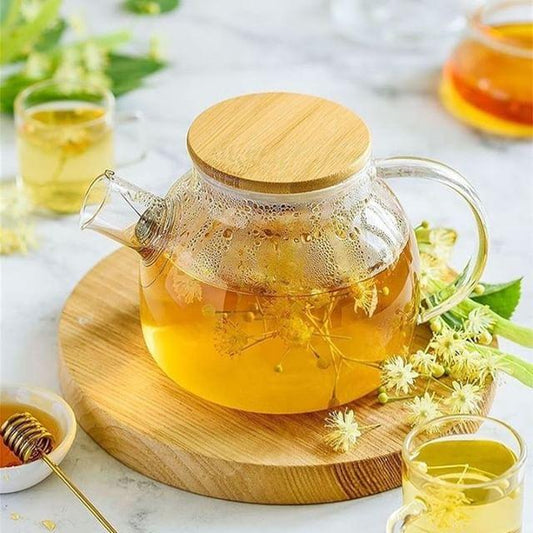Urban Gardening: Growing Your Own Produce in Small Spaces

Living in a city doesn’t mean you have to miss out on the joy of growing your own food. Urban gardening is a creative way to cultivate fresh fruits, vegetables, and herbs—even in small spaces like balconies, rooftops, and windowsills. Whether you're using container gardening, vertical planting, or community garden initiatives, growing your own produce offers a sustainable, cost-effective, and rewarding experience.
Let’s explore how you can start your own urban garden and enjoy fresh, homegrown food—no matter how small your space is!
1. Benefits of Urban Gardening
✔ Fresh, Healthy Food – Harvest organic, pesticide-free fruits, vegetables, and herbs.
✔ Space-Efficient – Even a small balcony, windowsill, or rooftop can become a productive garden.
✔ Sustainable & Eco-Friendly – Reduces food miles, supports pollinators, and improves air quality.
✔ Cost-Effective – Saves money on groceries by growing your own produce.
✔ Therapeutic & Stress-Relieving – Gardening boosts mental health and promotes relaxation.
Even with limited space, urban gardening allows you to create a green oasis that provides fresh ingredients for your kitchen.
2. Container Gardening: Small Spaces, Big Yields
If you don’t have a yard, container gardening is the easiest way to grow food. Pots, planters, and even repurposed containers can turn any small space into a productive mini-garden.
🔹 Best Crops for Containers
✔ Herbs: Basil, mint, parsley, thyme, chives, rosemary
✔ Leafy Greens: Lettuce, spinach, kale, arugula
✔ Vegetables: Tomatoes, peppers, carrots, radishes, cucumbers
✔ Fruits: Strawberries, dwarf citrus trees, blueberries
🔹 Choosing the Right Containers
- Clay or Ceramic Pots – Durable and visually appealing but heavier.
- Plastic or Fabric Grow Bags – Lightweight, easy to move, and great for root aeration.
- Repurposed Items – Buckets, wooden crates, or even old mugs can be used creatively.
🔹 Essential Tips for Container Gardening
✔ Use well-draining soil and ensure pots have drainage holes.
✔ Place containers in sunny spots (most vegetables need 6+ hours of sunlight per day).
✔ Water consistently, but avoid overwatering—containers dry out faster than garden beds.
✨ Tip: Rotate plants seasonally—grow lettuce and herbs in spring, tomatoes in summer, and root vegetables in fall.
3. Vertical Gardening: Growing Up, Not Out
If you have limited floor space, vertical gardening allows you to grow upwards using hanging baskets, wall planters, or trellises.
🔹 Best Plants for Vertical Gardens
✔ Vining Vegetables: Cucumbers, beans, peas, squash
✔ Hanging Herbs: Mint, oregano, thyme
✔ Leafy Greens: Spinach, lettuce, microgreens
✔ Strawberries & Small Fruits: Ideal for hanging containers
🔹 How to Build a Vertical Garden
1️⃣ Wall Planters – Attach small pots or fabric pockets to walls or fences.
2️⃣ Hanging Baskets – Perfect for strawberries, cherry tomatoes, or trailing herbs.
3️⃣ Trellises & Ladders – Support climbing plants like beans or peas.
4️⃣ Stacked Planters – Use stacked shelving or tiered pots for maximum space efficiency.
✨ Tip: A vertical herb garden near your kitchen makes it easy to grab fresh seasonings while cooking!
4. Rooftop & Balcony Gardens: Maximizing Outdoor Space
If you have access to a rooftop or balcony, you can transform it into a lush urban garden.
🔹 How to Set Up a Rooftop or Balcony Garden
✔ Use Raised Beds or Large Containers – Choose lightweight options to avoid overloading structures.
✔ Install Wind Protection – Balconies and rooftops are windier, so use trellises or screens.
✔ Collect Rainwater – Set up a small rain barrel to make watering easier.
✔ Add Pollinator Plants – Flowers like lavender and marigolds attract bees and butterflies.
🌞 Sunlight Consideration: South-facing balconies get more sunlight, while north-facing spaces may require shade-tolerant plants like lettuce and spinach.
5. Community Gardens: Growing Together
If you don’t have your own space, community gardens offer an opportunity to grow your own food while connecting with neighbors.
🔹 Benefits of Community Gardening
✔ Access to shared gardening plots for growing food.
✔ Social benefits – Meet like-minded urban growers.
✔ Learn new skills – Many community gardens offer workshops and mentorship.
✔ Promotes urban biodiversity – Helps create greener, more sustainable cities.
🔹 How to Find or Start a Community Garden
✔ Search online for local community garden initiatives in your city.
✔ Check with municipal programs or neighborhood associations.
✔ If there’s no garden nearby, gather interested neighbors and start your own!
6. Smart Gardening Hacks for Small Spaces
✔ Use Reflective Surfaces – Mirrors or white walls help reflect light onto plants.
✔ Grow Microgreens Indoors – Fast-growing and packed with nutrients!
✔ Companion Planting – Pair plants that help each other grow (e.g., basil improves tomato growth).
✔ Self-Watering Systems – DIY wicking systems reduce watering frequency.
✨ Bonus Tip: Upcycle materials like old pallets, tin cans, or shoe organizers as DIY planters!
7. Final Thoughts: Bringing the Farm to the City
Urban gardening proves that any space—no matter how small—can be transformed into a thriving green oasis. Whether you’re growing herbs on a windowsill, cultivating veggies on a balcony, or joining a community garden, you’re contributing to a more sustainable and self-sufficient lifestyle.
🌱 Start your urban garden today and enjoy fresh, homegrown produce—right from your own city space! 🍅🌿🌞
Share:





